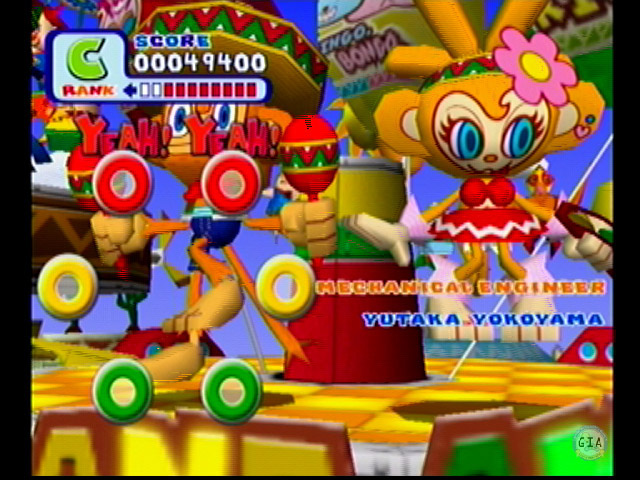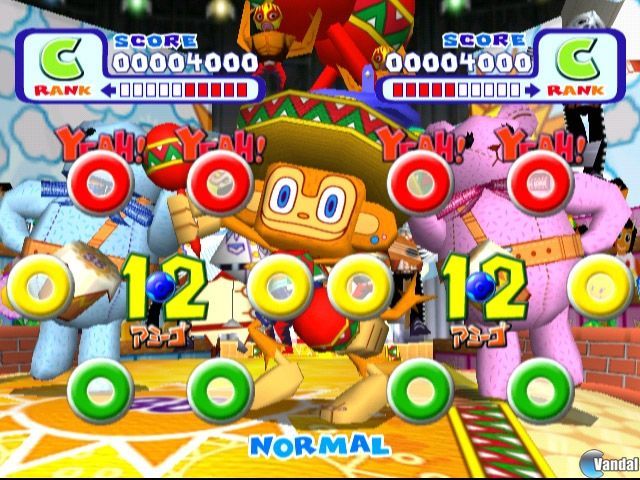

But plenty of other problems show up to seal the deal. Samba de Amigo’s terrible controls are such a big problem they would make the game nearly impossible to recommend. You can also choose to play using button inputs instead of shaking your Joy-Cons, which is a bit more accurate, but saps all the potential fun out of the game. There’s no penalty for shaking your controller too early, so waving your arms as close as you can to the right position and hoping for the best is an entirely feasible strategy most of the time. Sometimes I barely flicked my wrist and registered perfect hits sometimes I would shake the Joy-Con wildly and not have it register at all. The problem is, Samba de Amigo: Party Central is terrible at tracking your position accurately. A few twists change things up, like poses that require you to hold still in certain positions and trailing arrows you need to follow along their path. Players need to hold the left or right Joy-Con in a high, middle, or low position and shake it when a note hits the corresponding target.

In Party Central, as in the original Samba de Amigo, notes move out from the center of the screen toward six targets displayed in a circle. Samba de Amigo: Party Central’s aesthetics get in the way as much as its lousy controls. Put simply, it’s perhaps the least precise rhythm game I’ve ever played. That change made Samba de Amigo a lesser game on Wii, and the same is true of Samba de Amigo: Party Central. The Wii port ditched the original’s maracas in favor of the Wiimotes, which Samba de Amigo: Party Central replaces with the Switch’s Joy-Cons. Players used these special controllers to match onscreen notes in time with the music. One of the reasons the original Samba de Amigo stood out was due to its extremely silly maraca peripherals.
#Samba de amigo dreamcast series#
Since then, the only entries in the series have been an updated version of the Dreamcast game and a 2008 Wii port that failed to live up to its predecessor’s charm. The original Samba de Amigo was released in arcades in 1999 and on the (beautiful and perfect but doomed) Dreamcast in 2000. If you didn’t know that Samba de Amigo: Party Central is the sequel to a well-loved rhythm game, you’re probably not alone. Samba de Amigo: Party Central fails this crucial test so thoroughly that it’s hard to imagine what audience it was even made for. Has been home to some banging homebrew that’s keeping it alive Sturmwind, Intrepid Izzy, Xenocider, Xeno Crisis, Shadowgangs are as good as anything released in its day.A multiplayer game with the word "party" in its title should, at minimum, be able to liven up obligatory family gatherings or occupy a group of people too inebriated to hold a conversation but not ready to go home yet.

It did pretty well regardless just not enough to save Sega, and of course being the clear superior console of that gen it should have sold far more.Īnyway love the console, my personal fav, always hooked up to my TV, will be there till I die. The Dreamcast launched in the west without Sega having a marketshare there, they literally had to start again. This forced Sega to have to prematurely kill the Saturn in the east, fund development of the Dreamcast while losing money in the western markets and forced them to release the Dreamcast earlier than they wanted meaning that its specs weren’t what was originally planned and features they had wanted such as a DVD drive had to be compromised on.

Could have just tried to claw back as much of the market as possible and continue support, being third is better than having zero share of the market. Sega of America’s decision to kill the Saturn when it was still doing well in Japan and while the Dreamcast development was still in its early days was the most bizarre and stupid of decisions. Makes you wonder how on Earth these people become popular Grr, one of those memories that will forever play out in your head had you said something etc. (If anyone’s wondering why I’m mentioning Anne Robinson in a Dreamcast thread then see R’s spoiler) I really regret not sticking around that day and verbally going off at her. My client got very upset and never came back, probably gaining emotional scars for a few years whilst I lost a paying client at a time I could not afford to. Also rather overweight.Ībout half way through the session Robinson arrived and, not liking the music playing, said quite loudly “is it bad music training day” then shot a look at my client struggling through a basic planking exercise and said, in a very weakest link trademarked Robinson acidic way “or is it fat persons training day”. I had a new client, first session, incredibly nervous and unconfident. Years ago I used to be a PT and she used to work out (with her own trainer) in the studio I used for my clients.


 0 kommentar(er)
0 kommentar(er)
